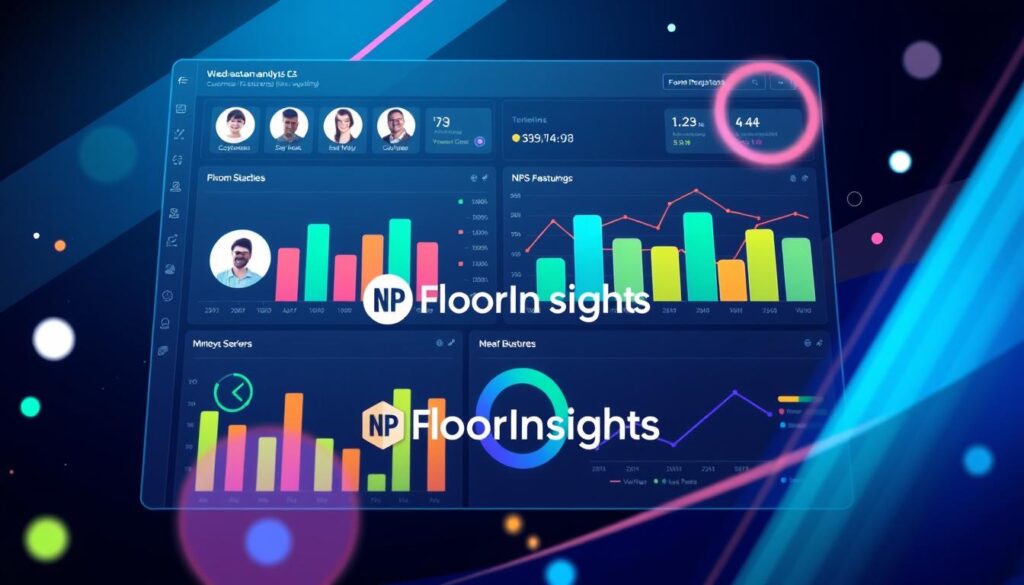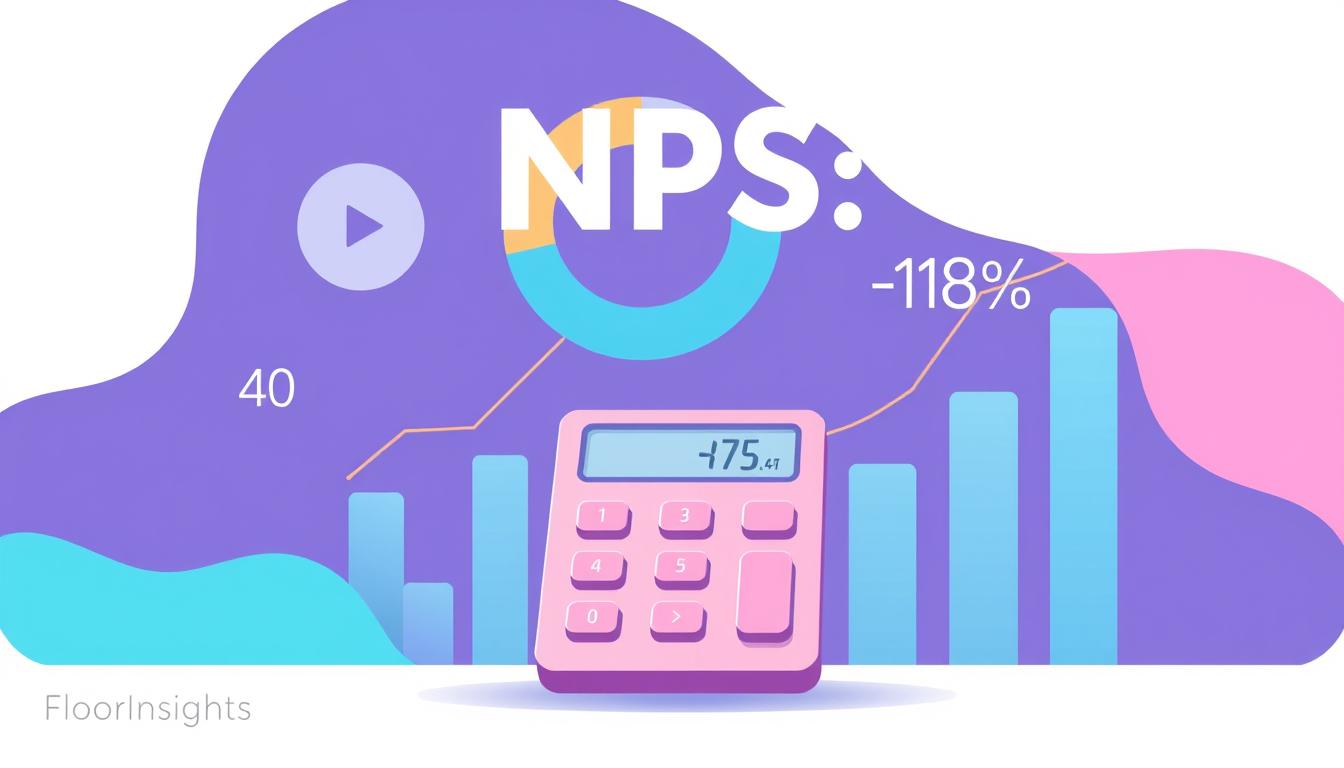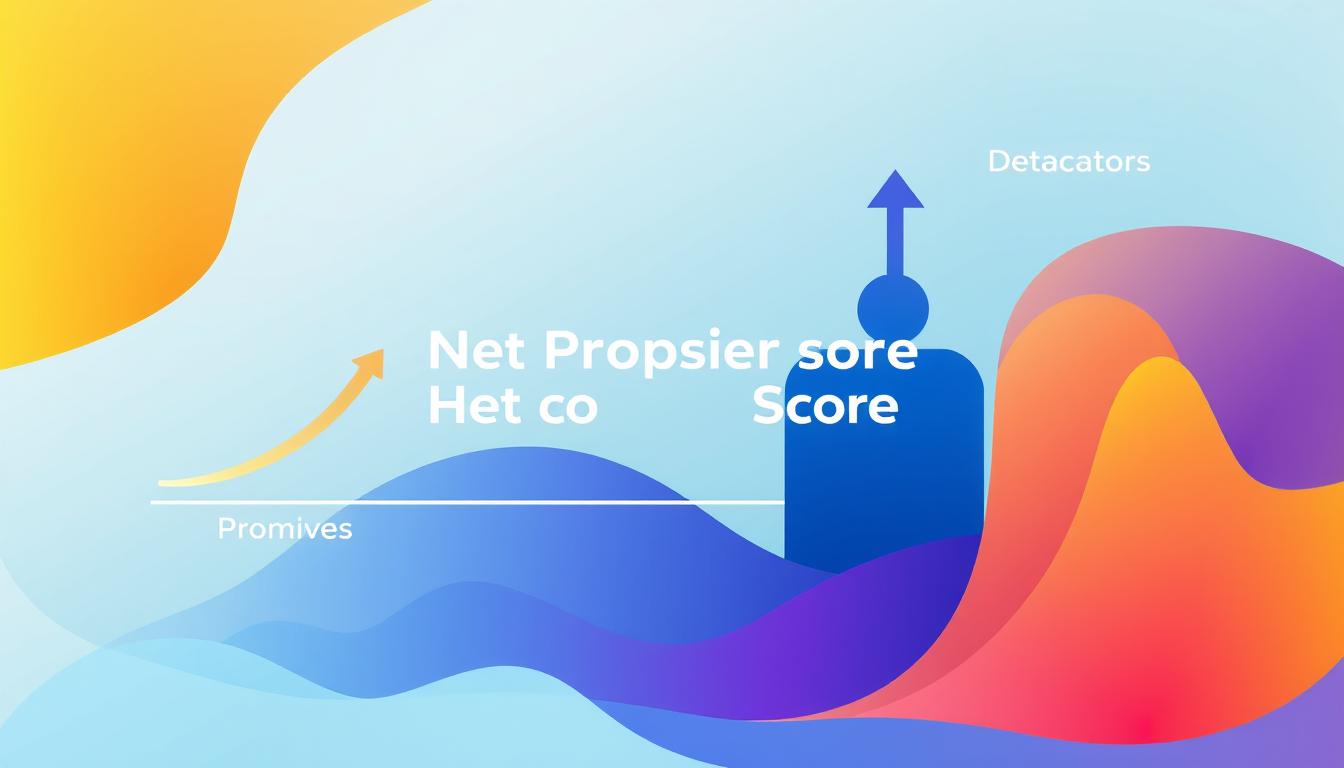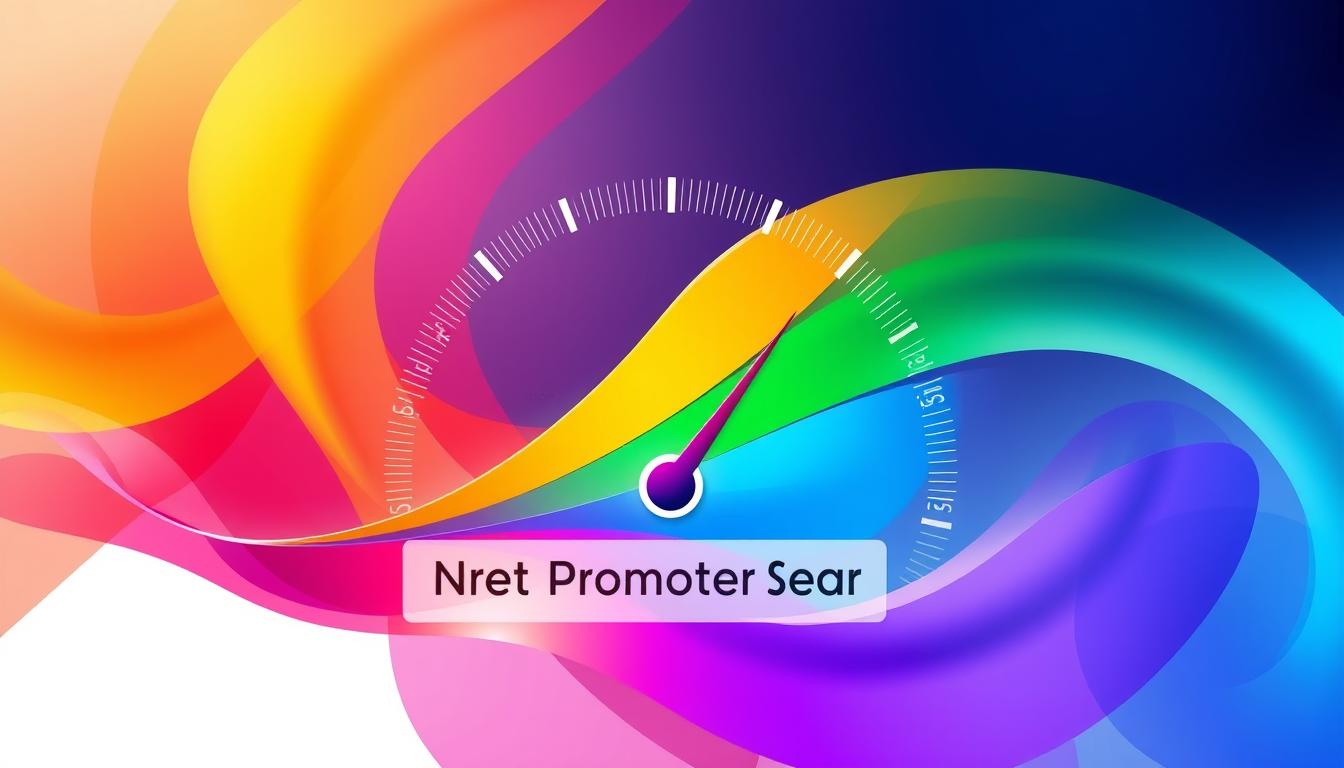In the dynamic landscape of the Indian SaaS (Software as a Service) industry, the Net Promoter Score (NPS) has emerged as a critical metric for companies to gauge customer satisfaction, loyalty, and engagement. In this article, we will explore the significance of NPS and how it can be leveraged to drive business growth in the SaaS sector.
Net Promoter Score is a widely-adopted customer experience metric that measures the likelihood of customers to recommend a product or service to others. By understanding their NPS, SaaS companies can gain valuable insights into customer sentiment, identify areas for improvement, and develop strategies to enhance customer retention and advocacy.
Key Takeaways
- NPS is a powerful metric for SaaS companies to measure customer satisfaction and loyalty
- Understanding NPS can help SaaS businesses identify areas for improvement and enhance customer experience
- Leveraging NPS data can drive customer retention and brand advocacy, leading to sustainable growth
- Implementing effective NPS survey strategies and analyzing the results are crucial for SaaS success
- Integrating NPS into customer relationship management (CRM) strategies can further strengthen customer engagement and loyalty
What is Net Promoter Score?
Net Promoter Score (NPS) is a widely-used metric that measures customer loyalty and advocacy. It gauges the likelihood of customers to recommend a company’s products or services to others. Understanding the underlying concept of NPS and the process of calculating the score is crucial for businesses aiming to improve customer satisfaction and drive growth.
Understanding the Concept
At its core, NPS is based on a simple survey question that asks customers: “How likely are you to recommend [company/product/service] to a friend or colleague?” Customers are asked to respond on a scale of 0 to 10, with 0 being “Not at all likely” and 10 being “Extremely likely.” This feedback provides valuable insights into the level of customer satisfaction and their willingness to promote the company’s offerings.
Calculating the NPS Score
The NPS score is calculated by subtracting the percentage of “Detractors” (customers who give a score of 0 to 6) from the percentage of “Promoters” (customers who give a score of 9 or 10). The resulting score can range from -100 to 100, with a higher score indicating a greater level of customer loyalty and advocacy.
| Score Range | Customer Type | Interpretation |
|---|---|---|
| 9 or 10 | Promoters | Loyal and enthusiastic customers who are likely to recommend the company |
| 7 or 8 | Passives | Satisfied but unenthusiastic customers who are unlikely to recommend the company |
| 0 to 6 | Detractors | Unhappy customers who are likely to spread negative word-of-mouth |
By understanding and calculating the Net Promoter Score, companies can gain valuable insights into their customer experience and identify areas for improvement to drive customer loyalty and growth.
Importance of NPS for SaaS Companies
In the SaaS industry, where customer acquisition costs are high and competition is fierce, retaining and nurturing loyal customers is crucial for business success. The Net Promoter Score (NPS) serves as a powerful tool for SaaS companies to understand their customers’ experiences, identify areas for improvement, and foster long-term relationships that drive growth and profitability.
SaaS companies that prioritize NPS can reap significant benefits, including:
- Enhanced customer satisfaction and loyalty: By closely monitoring and addressing customer feedback captured through NPS surveys, SaaS providers can ensure their products and services align with customer needs and expectations, leading to higher satisfaction and retention rates.
- Improved customer retention: A high NPS indicates that customers are more likely to continue using a SaaS product, reducing churn and generating a steady stream of recurring revenue.
- Increased customer referrals and brand advocacy: Highly satisfied and loyal customers are more inclined to recommend a SaaS product to their peers, effectively serving as brand ambassadors and driving new customer acquisition at a lower cost.
- Valuable insights for product development: NPS data can provide SaaS companies with valuable insights into customer pain points, feature requests, and areas for improvement, allowing them to prioritize product enhancements that will resonate with their target audience.
By embracing NPS as a strategic metric, SaaS companies can gain a competitive edge, foster deeper customer relationships, and drive sustainable long-term growth in the dynamic and highly competitive SaaS industry.
| Metric | Description | Importance for SaaS Companies |
|---|---|---|
| Net Promoter Score (NPS) | A customer loyalty metric that measures the willingness of customers to recommend a company’s product or service to others. | NPS is a critical indicator of customer satisfaction and loyalty, which are essential for the success of SaaS businesses that rely on recurring revenue and referrals. |
| Customer Satisfaction | A measure of how satisfied customers are with a company’s products, services, and overall customer experience. | Maintaining high customer satisfaction is crucial for SaaS companies to retain customers, reduce churn, and foster positive word-of-mouth marketing. |
| Customer Loyalty | The likelihood that customers will continue to use a company’s products or services and recommend them to others. | Loyal customers are more valuable to SaaS companies, as they provide a steady stream of recurring revenue and are more likely to serve as brand advocates. |
| Customer Retention | The ability of a company to keep its customers over time, reducing churn and maintaining a stable customer base. | High customer retention rates are essential for the long-term success of SaaS businesses, as it is more cost-effective to retain existing customers than to constantly acquire new ones. |
“In the SaaS world, customer retention is king. A high Net Promoter Score is a strong indicator that your customers are happy and engaged, which translates to lower churn and more reliable recurring revenue.”
Net Promoter Score and Customer Satisfaction
The Net Promoter Score (NPS) is a powerful metric that provides a direct measure of customer satisfaction. By assessing a customer’s willingness to recommend a company’s products or services, NPS offers invaluable insights into the overall customer experience.
Measuring Customer Experience
NPS surveys ask customers a simple question: “On a scale of 0 to 10, how likely are you to recommend our product/service to a friend or colleague?” Based on their responses, customers are categorized as Promoters (9-10), Passives (7-8), or Detractors (0-6). This breakdown helps SaaS companies understand the quality of their customer experience and identify areas for improvement.
Identifying Areas for Improvement
By analyzing the NPS results, SaaS companies can pinpoint specific aspects of their products or services that are resonating with customers, as well as those that need attention. Promoters provide valuable feedback on what they love, while Detractors offer insights into their pain points. This data enables companies to prioritize and address the most pressing issues, ultimately enhancing customer satisfaction and loyalty.
| Customer Segment | NPS Score Range | Implications |
|---|---|---|
| Promoters | 9-10 | Highly satisfied customers who are likely to recommend the product or service to others. |
| Passives | 7-8 | Satisfied but not enthusiastic customers who may be vulnerable to competitive offerings. |
| Detractors | 0-6 | Unhappy customers who may actively discourage others from using the product or service. |
By understanding this customer segmentation, SaaS companies can develop targeted strategies to address the needs of each group, ultimately enhancing overall customer satisfaction and driving business growth.
NPS and Customer Loyalty
A high Net Promoter Score (NPS) is a strong indicator of customer loyalty and brand advocacy. When customers are willing to actively promote a SaaS company’s products or services, it signals a deep level of engagement and commitment that goes beyond mere satisfaction.
Building Brand Advocacy
By nurturing their brand advocates, SaaS companies can leverage the power of word-of-mouth marketing to attract new customers and solidify their position in the market. These loyal customers can serve as valuable ambassadors, sharing their positive experiences and encouraging others to try the company’s offerings.
To build a strong base of brand advocates, SaaS companies should focus on delivering exceptional customer experiences, consistently addressing customer pain points, and fostering a sense of community and belonging among their user base. Regular communication, prompt issue resolution, and ongoing customer engagement can all contribute to the development of loyal, passionate brand advocates.
| Metric | Description | Importance for SaaS |
|---|---|---|
| Net Promoter Score (NPS) | A measure of customer loyalty, reflecting the likelihood of customers to recommend a product or service to others. | A high NPS indicates a loyal customer base that is willing to actively promote the SaaS brand, driving new customer acquisition through word-of-mouth. |
| Customer Loyalty | The degree to which customers remain committed to a brand, making repeat purchases and resisting competitor offerings. | Loyal customers are more likely to renew subscriptions, upgrade services, and provide valuable feedback, contributing to the long-term success of a SaaS business. |
| Brand Advocacy | The act of customers actively promoting and recommending a brand to others, often through various channels like social media, online reviews, and personal recommendations. | Brand advocates can serve as powerful marketing tools, driving new customer acquisition and enhancing the brand’s reputation within the industry. |
By prioritizing customer loyalty and nurturing brand advocacy, SaaS companies can unlock a significant competitive advantage in the market, fueling sustainable growth and long-term success.
Using NPS for Customer Feedback
Net Promoter Score (NPS) surveys offer a straightforward and effective way for SaaS companies to gather valuable customer feedback. By analyzing the responses, we can gain crucial insights into our customers’ pain points, preferences, and overall sentiment. These insights can then inform our product development, customer support, and marketing strategies, empowering us to create a better customer experience.
One of the key benefits of using NPS for customer feedback is its simplicity. The core NPS question – “How likely are you to recommend our product to a friend or colleague?” – provides a clear indicator of customer loyalty and satisfaction. By supplementing this with additional open-ended questions, we can uncover the underlying reasons behind a customer’s score, allowing us to delve deeper into their experiences.
Furthermore, NPS data can be segmented and analyzed to identify trends and patterns. For instance, we may notice that customers with a certain subscription plan or from a particular industry tend to be more or less satisfied. This information can guide us in tailoring our offerings and strategies to better meet the needs of different customer groups.
| Key NPS Feedback Areas | Insights Gained |
|---|---|
| Product Features | Identify areas for product enhancement and development |
| Customer Support | Pinpoint opportunities to improve support quality and responsiveness |
| Pricing and Value | Understand customer perceptions of the product’s value proposition |
| User Experience | Uncover pain points and areas for improving the overall user experience |
By leveraging NPS as a customer feedback mechanism, SaaS companies can stay closely connected to their customers’ needs and sentiments. This knowledge empowers us to make data-driven decisions, enhance the customer experience, and ultimately drive long-term loyalty and growth.

Implementing NPS Surveys
As a SaaS company, leveraging the Net Promoter Score (NPS) can be a powerful tool for gathering meaningful customer feedback and driving business growth. However, the success of your NPS surveys hinges on proper implementation and adherence to best practices.
Best Practices for NPS Surveys
To ensure your NPS surveys yield valuable insights, consider the following best practices:
- Choose the right survey channels: Identify the communication channels that are most effective for reaching your customers, whether it’s email, in-app prompts, or a dedicated survey page on your website.
- Time the surveys thoughtfully: Determine the optimal timing for your NPS surveys, ensuring you capture customer feedback at critical touchpoints in their journey.
- Streamline the survey experience: Design a concise, user-friendly survey that minimizes friction and encourages customers to provide honest, meaningful responses.
- Personalize the survey: Tailor the survey questions and language to resonate with your specific audience, making the experience more relevant and engaging.
- Analyze the results thoroughly: Dive deep into the NPS data to uncover patterns, trends, and areas for improvement, then act on those insights to enhance the customer experience.
By following these best practices, you can collect high-quality customer feedback through your NPS surveys and leverage those insights to drive sustainable customer experience and Net Promoter Score improvements.
| Best Practice | Description |
|---|---|
| Choose the right survey channels | Identify the communication channels that are most effective for reaching your customers, whether it’s email, in-app prompts, or a dedicated survey page on your website. |
| Time the surveys thoughtfully | Determine the optimal timing for your NPS surveys, ensuring you capture customer feedback at critical touchpoints in their journey. |
| Streamline the survey experience | Design a concise, user-friendly survey that minimizes friction and encourages customers to provide honest, meaningful responses. |
| Personalize the survey | Tailor the survey questions and language to resonate with your specific audience, making the experience more relevant and engaging. |
| Analyze the results thoroughly | Dive deep into the NPS data to uncover patterns, trends, and areas for improvement, then act on those insights to enhance the customer experience. |
Implementing effective NPS surveys is crucial for SaaS companies to gather meaningful customer feedback and drive continuous improvements in customer experience.
Interpreting NPS Results
Analyzing your Net Promoter Score (NPS) is crucial for SaaS companies to understand their performance and identify areas for improvement. By benchmarking your NPS against industry standards and examining trends over time, you can uncover valuable insights that drive customer satisfaction and business growth.
Benchmarking NPS
Benchmarking your NPS against your industry peers is a powerful way to gauge your relative standing. This allows you to assess your customer satisfaction levels in the context of your competitive landscape. By comparing your NPS to industry benchmarks, you can identify opportunities for improvement and prioritize areas that require strategic focus.
Analyzing NPS Trends
Tracking the evolution of your NPS over time is essential for understanding the long-term trajectory of your customer satisfaction. Analyzing NPS trends can reveal patterns, such as seasonal fluctuations or the impact of specific initiatives. This data-driven approach enables you to make informed decisions and implement targeted strategies to enhance the customer experience.
| Year | NPS Score | Industry Average |
|---|---|---|
| 2020 | 45 | 40 |
| 2021 | 50 | 45 |
| 2022 | 55 | 50 |
This table illustrates the company’s NPS performance over the past three years, along with the industry average. The company’s NPS has steadily improved, outpacing the industry average and indicating a positive trend in customer satisfaction.
“Interpreting NPS results is not just about the score itself, but about understanding the nuances and trends that lie beneath the surface. This data-driven approach empowers SaaS companies to make informed decisions and deliver exceptional customer experiences.”
Improving Customer Retention with NPS
As a leading SaaS company, we understand the crucial role that customer retention plays in driving business success. By leveraging the powerful insights provided by Net Promoter Score (NPS), we can proactively identify and address the factors that influence customer loyalty and customer experience.
NPS data allows us to pinpoint the specific areas where our customers are encountering challenges or pain points. This valuable information empowers us to take targeted actions to enhance the overall customer experience, leading to improved customer satisfaction and reduced churn.
Through regular NPS surveys, we can monitor trends in customer sentiment over time, enabling us to quickly respond to any fluctuations or emerging issues. By addressing the root causes of customer dissatisfaction, we can foster stronger customer relationships and build a loyal customer base that is more likely to continue using our products and services.
Moreover, by understanding the key drivers of customer retention, we can refine our marketing and customer success strategies to better meet the evolving needs of our customers. This, in turn, helps us to retain our most valuable assets and drive long-term business growth.
| Metric | Impact on Customer Retention |
|---|---|
| Net Promoter Score | High NPS correlates with increased customer loyalty and reduced churn |
| Customer Satisfaction | Satisfied customers are more likely to remain loyal and continue using the product |
| Customer Engagement | Actively engaged customers are less likely to churn and more likely to advocate for the brand |
By leveraging the insights gained from NPS, we can develop a strategic, data-driven approach to customer retention that ultimately leads to long-term business success and sustainable growth.
NPS and Customer Relationship Management
Integrating Net Promoter Score (NPS) data into customer relationship management (CRM) strategies can be a game-changer for SaaS companies. By seamlessly incorporating NPS insights into CRM processes, businesses can tailor their approach, address customer concerns, and provide a personalized experience that enhances customer loyalty and retention.
Leveraging NPS for Stronger CRM Strategies
NPS data can provide invaluable information about customer sentiment and behaviors, helping SaaS companies fine-tune their CRM strategies. By analyzing NPS scores and customer feedback, businesses can:
- Identify key pain points and areas for improvement in the customer experience
- Segment customers based on their level of loyalty and engagement
- Develop targeted campaigns and initiatives to address the specific needs of different customer groups
- Enhance customer communication and outreach efforts to build stronger relationships
By integrating NPS into CRM, SaaS companies can create a more holistic view of their customer base, enabling them to deliver exceptional service and drive long-term customer retention.
Aligning NPS with CRM Processes
Seamlessly incorporating NPS data into CRM workflows can lead to significant improvements in customer relationship management. This can be achieved by:
- Linking NPS survey responses to individual customer records in the CRM system
- Automating NPS data collection and analysis to generate real-time insights
- Developing customer segmentation and targeting strategies based on NPS scores
- Empowering customer service teams with NPS insights to provide personalized support
- Aligning marketing and sales efforts with NPS-driven customer insights
By seamlessly integrating NPS and CRM, SaaS companies can unlock the full potential of their customer data, driving improved engagement, loyalty, and retention.
Integrating NPS data into CRM strategies is a powerful way to enhance customer relationships and drive long-term growth for SaaS businesses.
Leveraging NPS for Customer Engagement
The Net Promoter Score (NPS) is not just a metric for measuring customer satisfaction; it can also serve as a powerful tool for driving customer engagement and fostering stronger relationships. By actively engaging with customers based on their NPS feedback, SaaS companies can demonstrate their commitment to improving the customer experience, address pain points, and cultivate a sense of loyalty and advocacy among their user base.
To effectively leverage NPS for customer engagement, SaaS companies should consider the following strategies:
- Respond to Detractors: Reach out to customers who provided a low NPS score and actively address their concerns. This shows that the company values their feedback and is willing to take action to improve their experience.
- Engage with Passives: Customers who gave a neutral NPS score may be on the fence about your SaaS solution. Engage with them to understand their needs and identify ways to enhance their experience, potentially converting them into loyal promoters.
- Celebrate Promoters: Customers who provided a high NPS score are your brand advocates. Engage with them, gather their feedback, and find ways to amplify their positive experiences, such as through user-generated content or referral programs.
By leveraging NPS data to guide your customer engagement strategy, SaaS companies can not only improve customer satisfaction and loyalty, but also foster a sense of community and advocacy that can drive long-term growth and success.
| NPS Score Range | Customer Segment | Engagement Strategies |
|---|---|---|
| 9-10 | Promoters | Celebrate their positive experiences, encourage referrals, and gather valuable feedback. |
| 7-8 | Passives | Understand their needs, identify areas for improvement, and work to convert them into Promoters. |
| 0-6 | Detractors | Reach out, address their concerns, and take actionable steps to improve their experience. |
By leveraging NPS data to guide your customer engagement strategy, SaaS companies can not only improve customer satisfaction and loyalty, but also foster a sense of community and advocacy that can drive long-term growth and success.
“Engaged customers are more likely to become loyal advocates, driving increased referrals and revenue for the business.”
Conclusion
In conclusion, Net Promoter Score (NPS) is a vital metric for SaaS companies in India, as it provides invaluable insights into customer satisfaction, loyalty, and advocacy. By effectively leveraging NPS, SaaS organizations can enhance the overall customer experience, foster long-term relationships, and drive sustained business growth in the dynamic and competitive SaaS landscape.
Throughout this article, we have explored the importance of NPS for the SaaS industry, its role in measuring customer satisfaction and loyalty, and the strategies for implementing and interpreting NPS surveys. We have also highlighted how NPS can be integrated into customer relationship management (CRM) strategies to improve customer engagement and retention.
As SaaS companies in India continue to navigate the evolving market dynamics, maintaining a strong focus on customer-centricity will be crucial for their success. By consistently monitoring and improving their NPS, SaaS providers can gain a competitive edge, cultivate a loyal customer base, and position themselves for long-term growth and profitability within the SaaS industry.
FAQ
What is Net Promoter Score (NPS)?
Net Promoter Score (NPS) is a customer loyalty metric that measures the likelihood of customers to recommend a company’s products or services to others. It is based on a simple survey question that asks customers to rate their willingness to recommend the company on a scale of 0 to 10.
How is NPS calculated?
NPS is calculated by subtracting the percentage of “Detractors” (customers who score 0-6) from the percentage of “Promoters” (customers who score 9-10). The resulting score ranges from -100 to 100, with a higher score indicating a higher level of customer loyalty and advocacy.
Why is NPS important for SaaS companies?
In the SaaS industry, where customer acquisition costs are high and competition is fierce, retaining and nurturing loyal customers is crucial for business success. NPS serves as a powerful tool for SaaS companies to understand their customers’ experiences, identify areas for improvement, and foster long-term relationships that drive growth and profitability.
How does NPS measure customer satisfaction?
NPS provides a direct and valuable measure of customer satisfaction by assessing their willingness to recommend the company’s products or services. By analyzing the NPS results, SaaS companies can gain insights into their customers’ experiences, identify areas where they excel, and pinpoint opportunities for improvement to enhance overall customer satisfaction.
How can NPS help build brand advocacy?
A high NPS score indicates that a company has a loyal customer base that is willing to actively promote and advocate for the brand. By nurturing these brand advocates, SaaS companies can leverage the power of word-of-mouth marketing to attract new customers and solidify their position in the market.
How can SaaS companies use NPS for customer feedback?
NPS surveys provide a straightforward and effective way for SaaS companies to gather valuable customer feedback. By analyzing the responses, companies can gain insights into their customers’ pain points, preferences, and overall sentiment, which can inform product development, customer support, and marketing strategies.
What are the best practices for implementing NPS surveys?
Effective implementation of NPS surveys involves choosing the right survey channels, timing the surveys, and ensuring a smooth and user-friendly experience for customers. Following best practices can help SaaS companies collect meaningful data and drive actionable insights.
How can SaaS companies interpret and benchmark their NPS results?
Interpreting the NPS results involves benchmarking the score against industry standards, analyzing trends over time, and using the insights to make data-driven decisions that drive customer satisfaction and business growth. This helps SaaS companies understand their performance and identify areas for improvement.
How can NPS data improve customer retention?
By leveraging NPS data, SaaS companies can proactively identify and address the factors that influence customer retention. By understanding the drivers of customer loyalty and addressing pain points, companies can enhance the overall customer experience and reduce churn, ultimately leading to improved business performance.
How can NPS be integrated into CRM strategies?
Integrating NPS data into customer relationship management (CRM) strategies can help SaaS companies optimize their interactions with customers and foster deeper, more meaningful relationships. By seamlessly incorporating NPS insights into CRM processes, companies can tailor their approach, address customer concerns, and provide a personalized experience that enhances customer loyalty and retention.
How can SaaS companies leverage NPS for customer engagement?
NPS can serve as a powerful tool for driving customer engagement and fostering stronger relationships. By actively engaging with customers based on their NPS feedback, SaaS companies can demonstrate their commitment to improving the customer experience, address pain points, and cultivate a sense of loyalty and advocacy among their user base.






